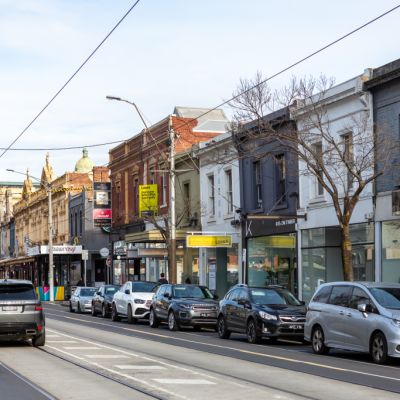What to do after a flood to ensure a successful insurance claim
With South-East Queensland and Northern NSW experiencing the worst flooding in Australian history, thousands of Aussies will be going through the devastating post-flood process, including filing insurance claims.
To understand the key ways we can go about picking up the pieces while reaching the most successful outcome possible, Nine Property spoke with Professor Paula Jarzabkowski, a Strategy and Risk Professor at The University of Queensland Business School and a global expert on disaster recovery and the insurance protection gap.
Please note that safety is your priority, only return to your property once emergency services give the OK. If water has entered your property, don’t turn on your electricity until it has been inspected by an electrician.
Contact your insurer as soon as you’re safe
You do not need to wait until you are home to contact your insurer; once your safety is no longer at risk, you can call. In fact, doing this will speed up the claims process and will allow insurers, if necessary, to dispatch assessors to look at your claim.
“Contact your insurer straight away and let them know that you’re going to make a claim, you don’t have to have all the details right at the start, just let them know you’re in this situation,” says Professor Jarzabkowski.
She also understands that many people will have flooding all the way to the ceiling and will have lost critical documents, likely including their insurance policy. Don’t worry if this is the case.
“Give them your name and address as they have electronic records and will be able to find you,” Professor Jarzabkowski adds.
On return home, it’s crucial to collect evidence before cleaning up
The gut-wrenching return home might tempt many people to want to restore some kind of order to their space. But Professor Jarzabkowski says to hold off until you’ve collected evidence of the damage from multiple angles.
“This is a really emotional time for people when they’ve been flooded. Personal items and things that are irreplaceable will have been damaged or lost, so it can be very tempting to want to just get in there, clean everything and get the mess out. But hold that emotion for a moment,” explains Professor Jarzabkowski.
“Take photos and videos of the damage from a few angles first. This means that when someone comes out to assess your insurance claim, it will be very apparent to them why this damage was caused by the flood.”
Professor Jarzabkowski explains that insurance companies are not working against you, but will need to do their due diligence as part of their job. By providing as much evidence as possible, it makes this process much smoother.
“When someone comes around to assess the damage, they’re not coming around to doubt you, but I know it can feel like that when you’ve lost something that you value,” she says.
“They’re only coming over to check there isn’t fraud or moral hazard, because if a few people do that, that increases the cost for everyone. By you documenting the damage, you’re doing your best to help that assessor give you a fair deal.”
Keep samples of items that will need to be discarded
Professor Jarzabkowski also recommends keeping samples of heavily damaged items that need replacing and will be thrown out before an assessor is able to make it to the property, such as materials and fabric from things like carpets and couches.
“Keep a sample in addition to a photograph so it’s really clear as to why that item wasn’t kept,” she says. “To get replacements for something that’s no longer there is much more difficult if you can’t substantiate the claim.”
Make a list of damaged items
Professor Jarzabkowski suggests writing down things you’re getting rid of, taking a photo as you discard each item.
Make a list of each item and include a detailed description, such as brand, model and serial number where possible.
“This puts you in a better position to have the insurer work as sympathetically as possible with you while they do their due diligence, which they will need to do.”

Understand your policy and what you can claim
Depending on your insurance, loss or damage to your building and contents caused by flood is usually covered. In some instances, you may also be able to claim towards the clean up of the damage.
If you’ve purchased comprehensive Home and Contents insurance, checking your policy (or calling your insurer to request a copy) could save you thousands in additional benefits.
According to the Financial Rights Legal Centre, there may be additional benefits under your insurance policy that covers you for:
- Emergency or alternative accommodation;
- Removal of debris and demolition;
- Professional fees such as architects, surveyor and legal fees; or
- The costs of complying with new regulations.
Additional Benefits can be on top of your insured amount, therefore it’s important to check your eligibility for benefits before agreeing to any settlement of your claim.
Those who need urgent financial assistance should let their insurer know, as they may be able to fast track your claim and make an advance payment within five business days of you demonstrating your urgent financial need, according to the Insurance Council of Australia. Any advance payment may be deducted from the total value of your claim.
Will insurance premiums go up?
“Insurance does typically go up after a flood, because the more of a risk you are the more the regulator requires the insurance company to hold capital in reserve to cover the potential for your disaster,” says Professor Jarzabkowski.
While this can cause financial strain for many people, it does mean that when there is a disaster, there won’t be any issues in the insurer being able to cover the costs.
“Each time that properties are known to be higher risk, their insurance price goes up because that shows that the risk is being taken prudently and that the insurer will actually have capital reserve to pay,” explains Professor Jarzabkowski.
“So that’s a really good protection for us as citizens. If you insure prudently, they’ll have the money, because that’s how it’s regulated.”
However, Professor Jarzabkowski notes that insurance costs always need to be balanced with what you can afford.
Will the Federal Government Reinsurance Pool help bring down insurance premiums?
The government’s reinsurance pool for cyclone and related flood damage is in its final design and slated to be administered from 1 July 2022. However, this won’t apply to the current South-East Queensland and Northern NSW floods.
“The reinsurance pool is still going through legislation and the type of flooding we’re having right now actually wouldn’t be covered by the pool as it currently stands,” explains Professor Jarzabkowski.
“It’s for cyclones and floods in northern Australia and as we know, a lot of this has started to move into what wouldn’t be defined as that area, and it’s not cyclone induced anyway.”
Professor Jarzabkowski believes there may be a chance that the legislation will change once the pool is in effect, but at the moment, it wont help those currently affected.
Australia’s rebuild efforts need shared information and resilience planning for the future
Professor Jarzabkowski studies disaster response systems around the world.
“The systems where the information from insurers is 100 per cent plugged into the planning and recovery are best,” she explains.
This allows crucial information and loss data collected from insurers during a disaster to be utilised by local authorities, the public and private sectors and local government to then restore and rebuild these communities in a more resilient way, preventing future damage and lowering insurance premiums.
“This circular, joined-up system has not yet happened in Australia,” says Professor Jarzabkowski. “We have entered a vicious spiral of disaster, damage and lack of protection.”
“What we’re talking about is that short term responses should always try to feed into a plan for longer term systemic change. So as we go and do any clean up and rebuilding now, we’re trying to clean up and re-build better.
“Australia is one of the most exposed countries in the world to ‘natural’ disasters and yet also one of the most under-insured of advanced economies. There are better models to protect Australian homes and businesses. We should be learning from them, and then we should be leading the way for the world”.
Before deciding to buy or hold insurance from Domain Insure, consider the relevant Product Disclosure Statement (PDS) and Financial Services Guide at domain.com.au/insurance to see what’s right for you. Domain Holdings Australia Limited is an authorised representative (AR 1278882) of Domain Insure Pty Ltd (AFSL 502088)). Domain Insure is sub-authorised by Blue Zebra Insurance Pty Ltd (AFSL 504130) to arrange insurance cover on behalf of the insurer, Youi Pty Ltd (AFSL 316
We recommend
We thought you might like
States
Capital Cities
Capital Cities - Rentals
Popular Areas
Allhomes
More









